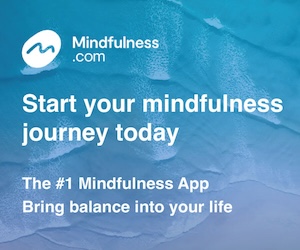Chandra Bhedana Pranayama | ‘Left Nostril Breathing’:
Chandra Bhedana Pranayama is a calming pranayama. It helps make the mind steady, encouraging mental clarity. Therefore, is often recommended in the case of mental and physical tension, restlessness, and agitation. The technique utilizes forced single-nostril breathing.
In Sanskrit, Chandra means Moon. Bhedana means “to pass through”. The moon is linked to the female calming energy, on the left side of the body. Thus, where one of the main subtle energy channels flow in our body, passes: Ida Nadi.
“Nadis” are energy pathways. These pathways (in yoga) have the ability to facilitate energy throughout the body.
Chandra Bhedana Benefits:
Much like other pranayama’s, it’s ability to activate the parasympathetic nervous system is of importance. Thus, offering physiological aid for symptoms of irritability, insomnia, blood pressure, concentration and memory.
In fact, one published report concluded an immediate reduction of blood pressure and heart rate after 27 rounds of Chandra Nadi pranayama.
Traditionally, it’s also touted as having the ability to stimulate the brain and increase body heat, by reducing the flow of bile. Consequently, being a great preparatory pranayama for meditation.
Chandra Bhedana Pranayama – How To:
Steps:
- Firstly, sit on a pillow in a comfortable cross-legged position. For example, half lotus or lotus position. Inhale, lift your shoulders and roll them back. In addition, maintain a straight spine, waist and neck.
- As you exhale, slide your shoulder blades down to keep your spine straight. The arms extended along the body, the hands resting on the knees with palms facing up. The thumb and forefinger are closed in a delicate contact, called Chin Mudra.
- Then, raise your right hand and bring your index and middle finger between your eyebrows where the third eye, Bhrumadya Drishti, is located.
- Close your eyes and direct your inner gaze to that point. Take a deep inhale and then exhale completely.
- Gently close your right nostril with your thumb and slowly inhale with your left nostril, counting to four.
- Now, close the left nostril with the ring finger and exhale from the right nostril, counting to four.
- Always inhale from the left and exhale from the right.
- This type of breathing is performed with alternating nostrils. After exhaling, close the right nostril again with your thumb and inhale with the left nostril always counting to four, then exhaling from the right nostril.
- Continue to inhale from the left and exhale from the right, closing the nostrils alternately. If you can, try to increase the length of your breath, bringing it to a six count, both whilst inhaling and exhaling. Feel the sense of well-being and calm that this pranayama brings to the nervous system.
Final Thoughts!
You can start the first session with ten breaths from both nostrils. Then, gradually increase, dedicating at least fifteen minutes a day to your Pranayama.
In addition, as you increase time spent with this pranayama, increase your inhale and exhale durations.
References:
- https://www.vinyasayogaashram.com/blog/what-is-chandrabhedan-pranayama-left-nostril-breathing-how-to-do-it-steps-and-its-benefits/#:~:text=This%20Pranayama%20reduces%20stress%2C%20irritability,Relieves%20acidity%20and%20sour%20belching.
- https://www.ncbi.nlm.nih.gov/pmc/articles/PMC3410188/





